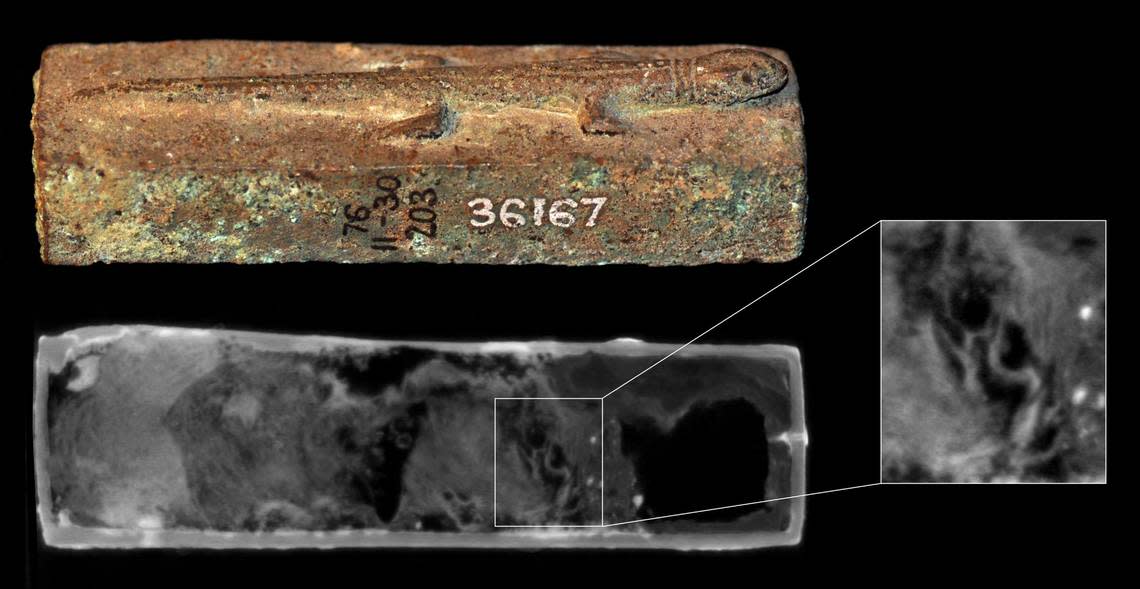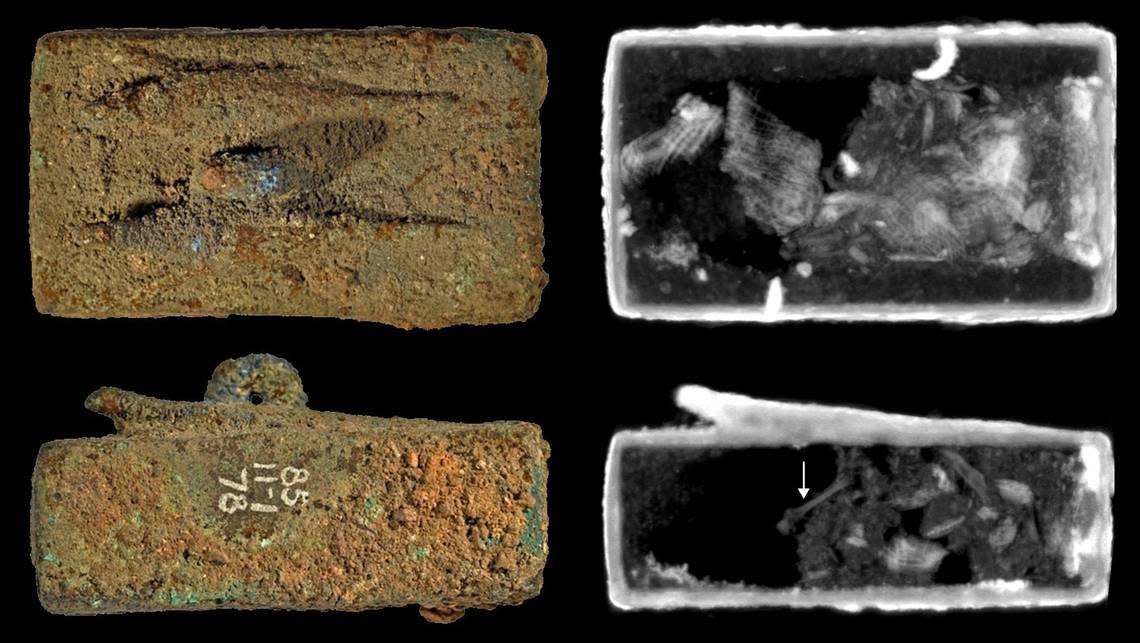Mummified creatures — used by ancient cult — found sealed in Egyptian coffin
At the end of the era of pharaohs, ancient Egyptians held onto their religious beliefs and commitment to the Gods.
Through rituals and burials, the Egyptians honored traditions followed for thousands of years.
Their animals were no exception.
In a new study, a group of researchers with the British Museum took a look inside ancient Egyptian copper alloy coffins that had been sealed for thousands of years. Their research, published in Nature on April 20, found mummified creatures.
Three metal coffins were found in the western Nile Delta in the city of Naukratis in 1885, according to the study. Naukratis was an international harbor operating since the 7th century B.C., the researchers said, and acted as a connection point for the trade network between Mediterranean nations and the Nile Valley.
The coffins were covered in depictions of lizards and eels, and were likely created around 500 to 300 B.C. They were still sealed when they made their way to the British Museum.
Another coffin, adorned by a figure of a lizard, was bought by the British Museum in 1876, according to the study. It was thought to be even older, created from 664 to 332 B.C.
Two more coffins, purchased by the museum in 1867, were topped with a creature that was part eel, part cobra and had a human head, the study said, depicting the ancient Egyptian solar and creator god Atum. They were also still sealed thousands of years after their creation.
Looking Inside
Using a process called neutron tomography, the scientists could take a look inside the metal boxes for the first time since their acquisition in a way that didn’t require the boxes to be opened, the study said.
The neutron tomography took a sort of X-ray that could look through the metal coffin and see the contents inside.

“The imaging confirmed that the coffins contained bones likely to be North African wall lizards which had been wrapped in textile - probably linen,” according to a news release from the British Museum. “Linen was widely used in the Egyptian mummification practices for animals as well as humans.”
The researchers found intact bones in three of the six coffins they scanned, the study said, and two others had what appeared to be bone shards.

Egypt is known for its mummies, and that includes the mummification of animals, according to the release. Some ancient Egyptians would even mummify their pets to join them in the afterlife.
“The lizards placed in these coffins were not pets but mummified as part of religious practices and beliefs that thrived particularly in the first millennium BC,” the release said.
The sun gods
The researchers believe the metal coffins were part of sacred offerings and may have been mummified during religious festivals for the “cult of Egyptian creator and sun gods,” including the god Atum depicted on the boxes, according to the British Museum.
The sun cult was a powerful religious force in ancient Egypt, according to LiveScience and peaked when Ra, a sun god, merged with Amun, the god of Thebes, and created Amun-Ra. Many ancient Egyptians considered Amun-Ra the most powerful Egyptian god, LiveScience reported, and he was worshiped until the time the metal coffins would have been created and polytheism disappeared.
